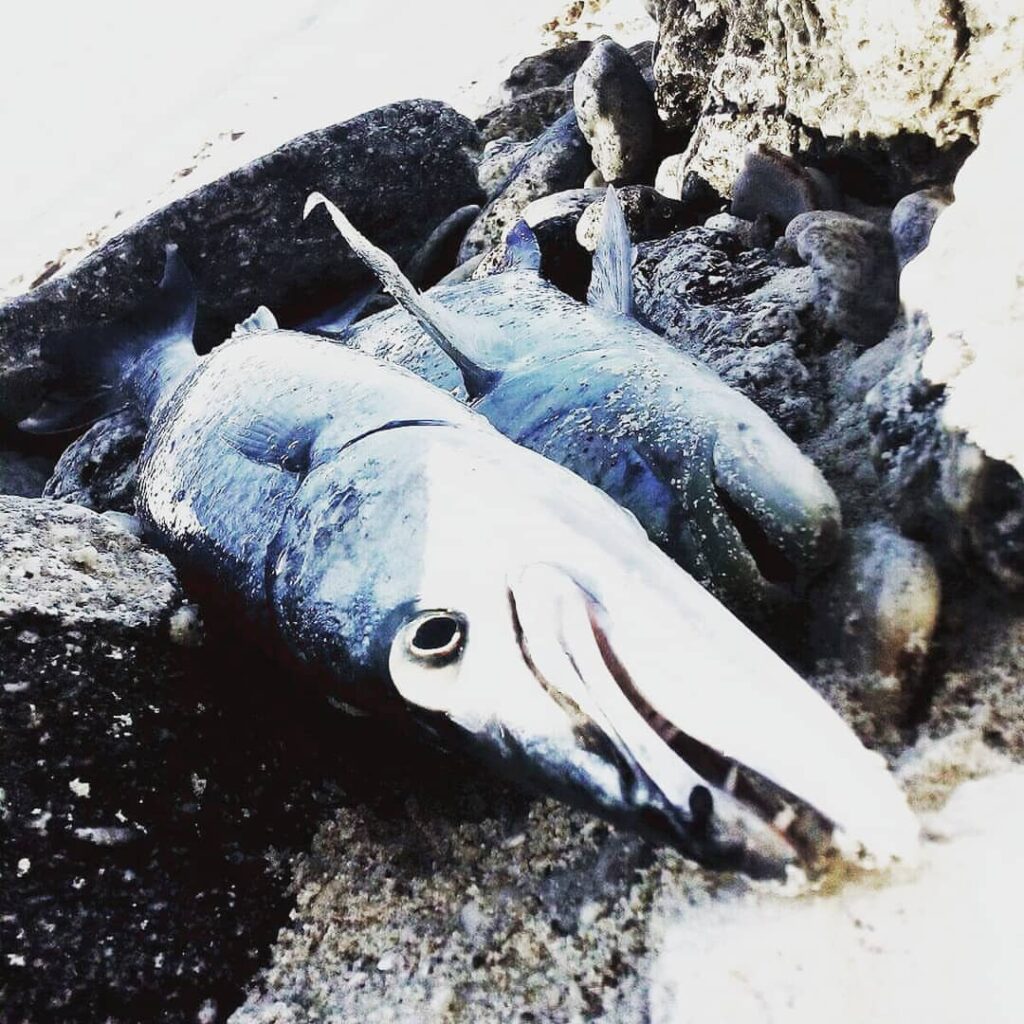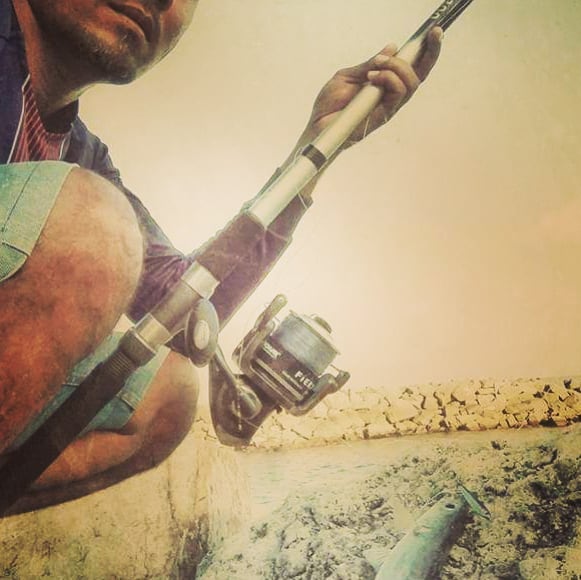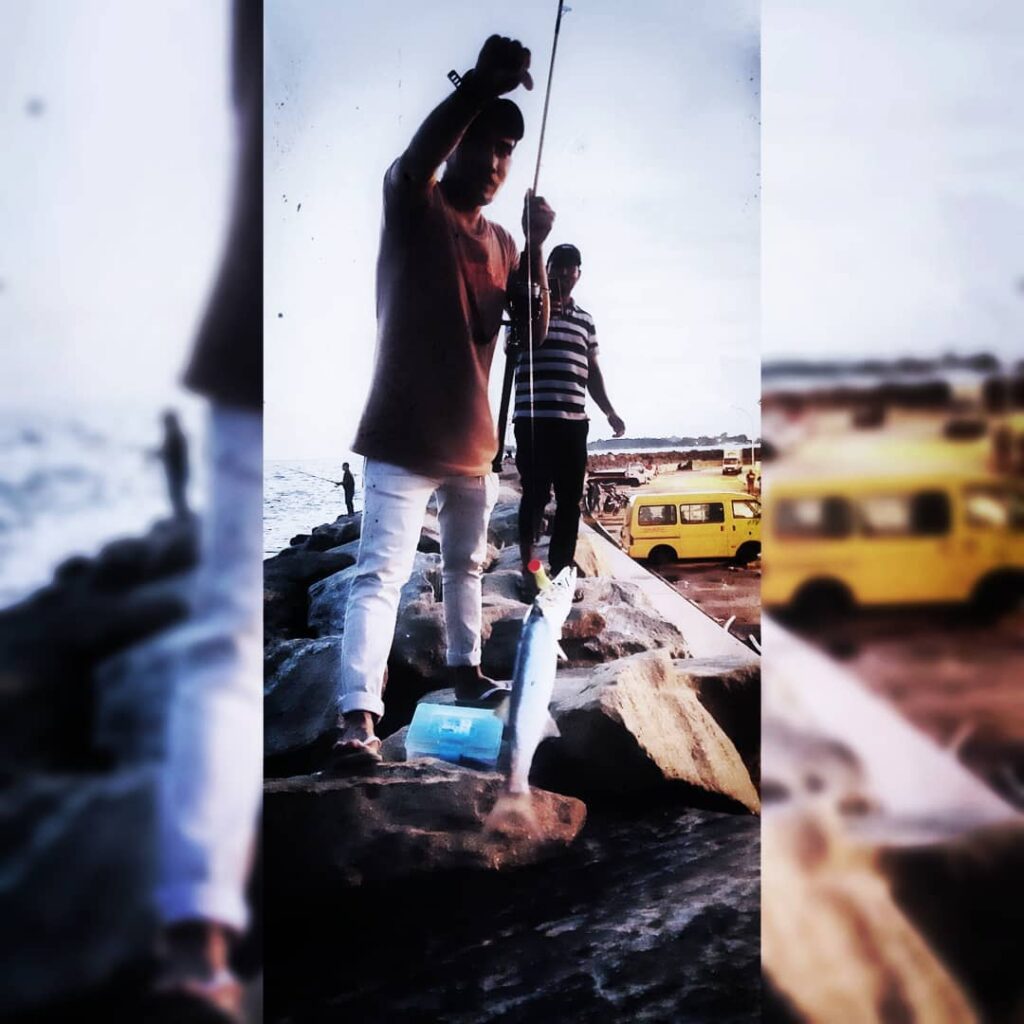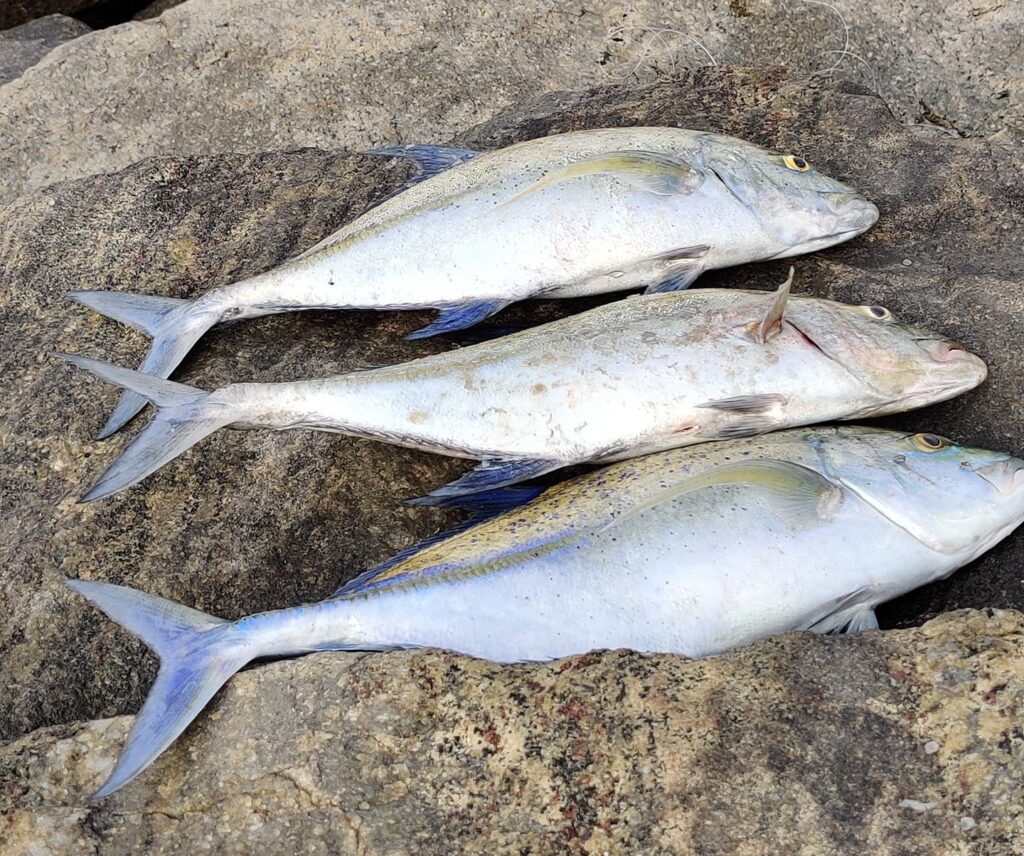
Barracuda, also known as theylhi in our dialect, is one of the most easily caught fish. They usually attack from the surface or the subsurface. Typically drawn to bright objects, flashy lures help to attract these lightning-fast fish.
We usually go to the reef front to catch barracudas. If we use a reel and rod, we’ll go with a 2000 to 5000 series reel with 20 to 50 pound monofilament. They usually station themselves or sit on the water’s surface. If you don’t use stainless steel wire, the line is likely to break. I prefer to catch barracudas since they are a tasty fish for me.

Once hooked, they flee rapidly but do not fight fiercely, despite the fact that large ones have a lot of stamina when captured. When caught, they can occasionally go airborne. You can easily defeat them. They normally take short runs, but you can simply go past them.
You can also catch this fish using bait. When you cast a lure in its vicinity, it searches for something that falls in the water. They’re curious fish. You can trick this fish by modifying the lure or bait. If you don’t receive a strike on your initial cast, try a new lure color or shape; they may strike.
Do not pull the line too soon, as it may not catch the fish. They typically hit the tail end of the bait. These fish have superb vision. So you can simply mislead them with fluorocarbon. However, exercise caution to prevent their sharp teeth from cutting through the line. When you feel a bite, take a few seconds to grasp its mouth or jaw. Next, tug the line.

I usually use 30-80 g lead lures with silver, green, and black stripes, but any fluorescent color would suffice. Use the belly of any reef fish or tuna as bait.
The barracuda, also known as “theylhi” in our language, is one of the easiest fish to catch. They usually attack at the surface or subsurface. Typically drawn to bright objects, flashy lures help to attract these lightning-fast fish.
On most days, we head to the reef front to catch barracuda. If we decide to utilize a reel and rod, we’ll use a 2000-5000 series reel with a 20- to 50- lb line. This sort of fishing rod can range in length from 8 to 15 feet, depending on where you’re fishing.
They usually stay at the surface of the water. Their primary purpose is to cut the line if you do not use stainless steel wire. I enjoy catching barracudas because they taste good.

Once hooked, they flee rapidly but do not fight back, though large ones have a lot of stamina when captured. When hooked, they may fly away. It’s straightforward for you to beat them. They normally move rapidly, but you can easily outpace them.
You can also catch this fish with food. When you throw the bait in an area it is familiar with, it seeks whatever falls into the water. They are extremely interested. You can deceive this fish by changing the hook or bait. If you modify the color or shape of the lure after the first shot, they may strike it.
If you pull the line too soon, it may not catch the fish. They usually bite the lure’s tail. These fish can hear quite well. That’s why fluorocarbon is such an effective trick. You must, however, exercise caution to avoid having your line cut by their keen teeth. After you feel it bite, hook it on its mouth or jaw right away. Finally, let go of the line.
I typically use lead lures weighing 30 to 80 grams with full silver, full green, full pink, and black and green striped patterns. Any bright color will do. Anyone can be bait, from reef fish to tuna.

